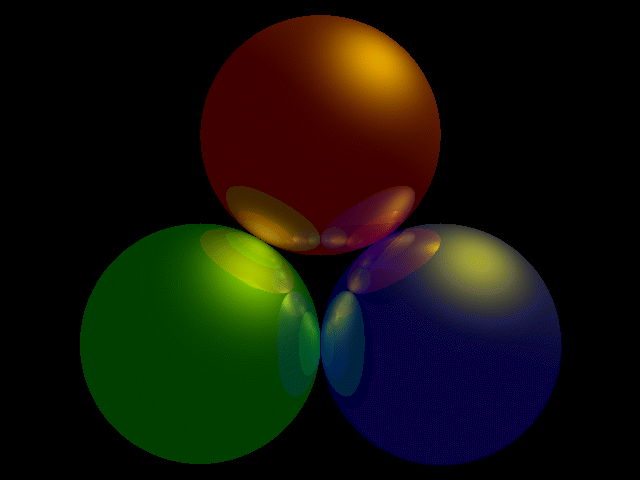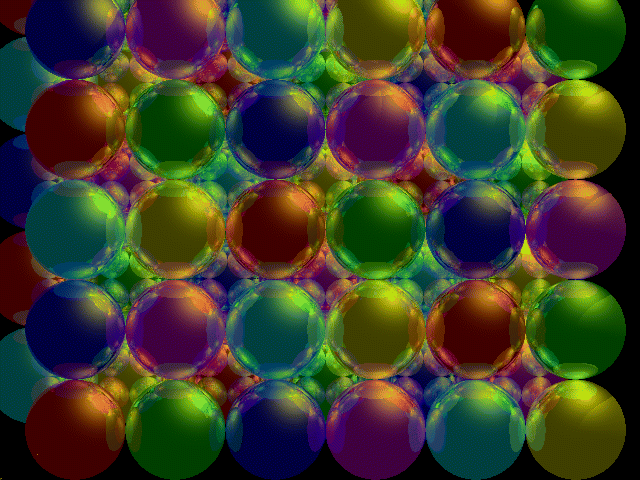Examples



Reference
The reference if chapter 8 of Advanced Animation and Rendering Techniques Theory and Practice by Alan Watt and Mark Watt.cllin@cs.WPI.EDU
Ray tracing is a versatile technique that uses the same model to integrate aspects of light/object interaction that were previously handled by seperate ad hoc algorithms - reflections, hidden surface removal and showdows.
The idea of ray tracing is tracing the light for ecah pixel, from an eye or view point through the pixel and into the scene.
The method to trace a light from light source and propagate to eye or view point, is called 'backwards ray tracing'. There are infinity of rays emanate from light source and it is difficult, therefore, to trace rays in the direction of light propagation.
In the implementation we trace the rays backward from the view point through each pixel and into these scene. That is we trace in the reverse direction of light propagation. This is because we are only interestd eventually in a fixed number of rays - those that pass through the view plane - say, one per pixel.
Ray/objects intersection and color rendering are two major issues need to be evaluate carefully. There are many existing algorithm to compute the intersection of light with objects. To select a sufficient method for ray/object intersection has a significant effect of performance, because most of time for raytracing is sepnd for intersection. Due to different objects have different characteristics, it is not necessary to apply the same ray/object intersection method for different objects. For example, even the geometric method may good enough for ray/sphere intersection evaluation, but it may not sufficient for ray/quardrics intersection.
After find out the intersec point for ray and objects, the next issue is render the color for that point. Following formula is used to model the color by ray tracing.
I = Ilocal + Krg . Ireflection + Ktg . Itransmitted
Where I is the final color of redendering
Ilocal is the term by direct illumination
Krg is the cofficient of reflection of object
Ireflection is reflected light
Ktg is the cofficient of transmitted or refraction of object
Ireflection is trasnmitted or refracted light
phong model is a good model for local light redering. Reflection and transmitted light need apply some geometric methods and need find out the normal vector of light vector at interection point.



cllin@cs.WPI.EDU